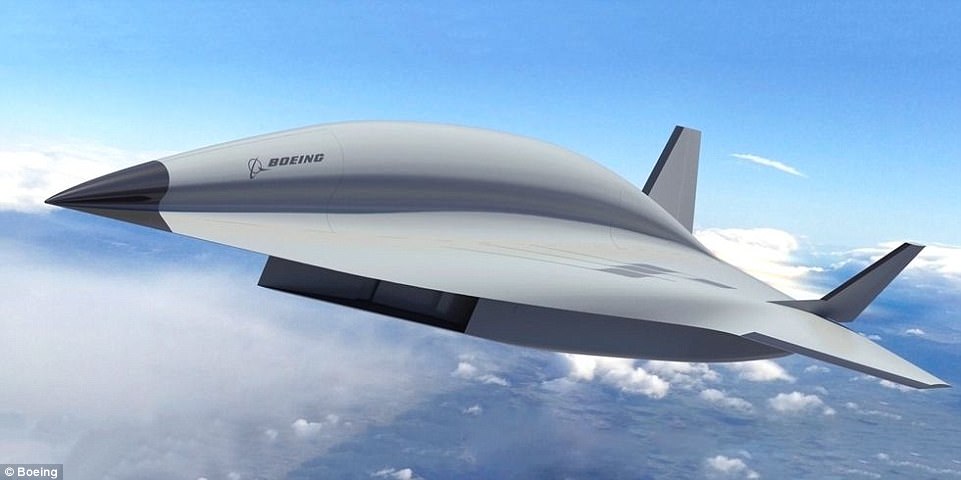Boeing has finally unveiled a concept for the potential successor to the legendary Blackbird SR-71 spy plane – and it is set to travel at more than five times the speed of sound.
This ‘Son of Blackbird’ could become a high-speed strike and reconnaissance aircraft in warfare of the future, travelling at such speeds that adversaries would have no time to react or hide.
It is designed to carry out spy missions in the same way as the Blackbird SR-71, which was the world’s fastest and highest-flying operational manned aircraft throughout its career.
In 1976 it set an absolute speed record of 2,193.2mph (3,529kmh) – a record it still holds today.
The concept was unveiled at the American Institute of Aeronautics and Astronautics SciTech forum and is the direct competitor to Lockheed Martin’s design which could be in the skies late in the 2020s.
The speed of sound, Mach 1, is around 767mph (1,235kmh). Hitting Mach 5 would mean the new craft has to travel at an astonishing 3,836mph (6,174kmh).
‘It’s a really hard problem to develop an aircraft that takes off and accelerates through Mach 1 all the way to Mach 5 and beyond’, Kevin Bowcutt, Boeing chief scientist for hypersonics told Aviation Week.
The SR-71 replacement needs to take off, accelerate and slow down but itself – just like the 1964 model.
Hypersonic technologies, including a combined cycle propulsion system that blends a rocket engine and a supersonic jet engine, are now sufficiently advanced to allow the planned SR-72 project to begin, it is believed.
The company is planning a two-step process. First it plans to being test flights with an F-16, single-engine design and then test flights with a twin-engine, full-scale operational vehicle that would be around 107 foot long (33 metres).
The design has not yet been approved for full-scale development but it shows a twin-tail, highly swept delta wing configuration.
‘The specific impulse of an air breathing engine goes down with increasing velocity, so you have to make the engine bigger to get to Mach 5’, said Mr Bowcutt.
‘But doing that means a bigger inlet and a bigger nozzle, and trying to get that through Mach 1 is harder’, he said.












